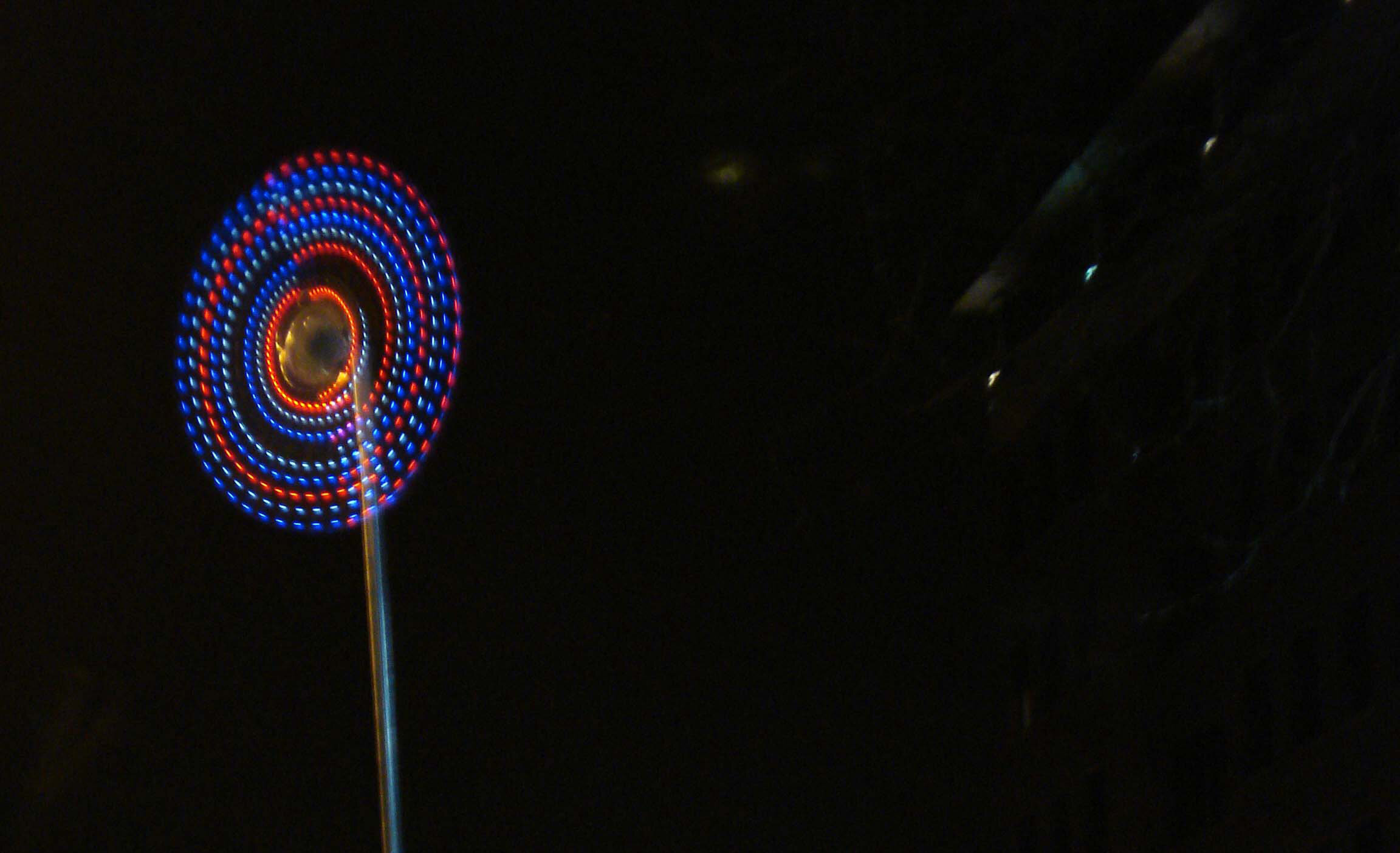
Whirlydoodle is Educational!
Use Whirlydoodles to spark scientific curiosity and discussion of weather and energy with kids and adults:
What causes the wind?
The basic cause of wind is differences in temperature. Air that is heated expands and it contracts when cooled. The sun does not evenly heat the earth, and this leads to differences in air temperature and resulting pressure differences cause air to move from one place to another. Naturally, it's a lot more complex than this but the wind can tell us a lot about the weather.
Why is the Whirlydoodle so interesting to watch?
Hard to describe but our theory is that as the wind causes Whirlydoodles to light up and splash color we are both surprised with our perception of the breeze and form a connection to the environment. The wind is a dynamic and ever-changing force of nature, expected but unpredictable, and strongly influenced by the location and current weather- ideal elements for an engaging light show. Whirlydoodles produce thousands of colors and a rhythm enhanced by the biological principal of persistence of vision.
What am I actually seeing with the Whirlydoodle?
The energy content of the wind and its dynamic, seemingly random nature. The color behavior of your doodle will depend upon the season, location, prevailing weather conditions, and local wind at the actual site. Whirlydoodles produce light and color in proportion to the wind speed and direction, growing brighter and more colorful as the wind picks up. Red is the first color you will see as it starts to rotate. Other colors are added and at maximum wind speed a whitish blend of colors is apparent.
How many colors does it produce?
More than a thousand is our guess, but it’s even better than that. The changing strength and direction of the wind causes a blending and transitioning of spectacular colors- and this pleasant signal to the brain is boosted by our persistence of vision, where colors persist in our visual perception long after fading.
What is the Whirlydoodle telling us about wind speed and direction?
Whirlydoodle brightness is roughly proportional to the wind speed. As the wind speed passes about 10 MPH the red LED’s start to illuminate. Next, the green LED’s light up. As high wind speeds all three primary colors are displayed the blue. The Whirlydoodle is about 50 percent brighter on the front side than the back, which indicates the wind direction the Whirlydoodle is facing.
Whirlydoodle Teaches Us About the Weather
A variety of specific weather events can be observed with the Whirlydoodle! Click here to learn more about Whirlydoodle and the weather.
A Technical Description of the Whirlydoodle:
The contraption has a big thingamajig that rotates when exposed to the wind and is connected to a doohickey by a widget. As the doohickey rotates, the whatchamacallit and what’s-it produce little blips of electricity that pass through little thingies to multicolored doodads on the rotating thingamajig. The gizmo does not require a widget or doodad to keep it pointed into the wind.
No, Really:
Wind causes the blades and connected generator to rotate, which rotates a magnetic field where copper coils produce electricity. That electricity powers multi colored LEDs (Light Emitting Diodes) that are located on the blades. A light breeze will cause individual colors appear on the Whirlydoodle. A higher wind speed causes additional colors to light up and brighten. An effect called persistence of vision creates the perception of a luminous disk or shape.
